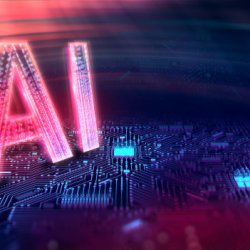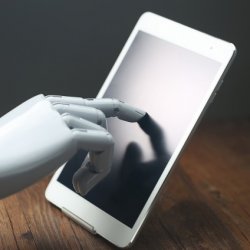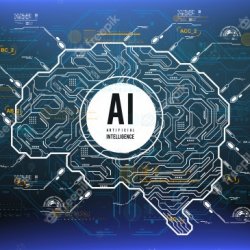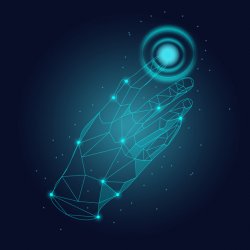technology in training an overview component 2

Exactly what is Blended Understanding?
In its most basic terms, blended Studying combines classic, Instructor-to-student lessons with technological innovation-based mostly instruction.
Numerous educational institutions and districts utilize a “rotation” product, which is frequently seen as a successful usually means of offering college students with much more personalized instruction and smaller team experiences. In some cases, saving money (via greater Total course dimensions, by way of example) is additionally a target. The basic premise includes college students rotating concerning on the internet and in-man or woman stations for various portions of the day. There are several versions of this solution, on the other hand: Do college students stay in the classroom or head over to a pc lab?
Does on-line instruction address Main material, or could it be mostly for remediation? Are all students accomplishing the identical thing on the web, or do unique students have different software package and Finding out experiences?
A single massive pattern for educational facilities requires striving to make certain that what transpires on the web is related with what happens throughout confront-to-face interactions with lecturers. That might require providing lecturers a say in picking out the software package that students use, such as, or earning a concerted hard work to make sure on the web programs give instructors with data that is useful in producing timely tutorial choices.
An additional trend will involve boosting college students’ use of the online market place beyond university. Robust blended Mastering courses contain “anytime, everywhere” entry to Mastering content material for college kids—A serious challenge in several communities.
Possibly the greatest hurdle confronting educators interested in blended Discovering, even though, is the lack of the stable exploration foundation. As of now, there remains no definitive evidence that blended Discovering works (or doesn’t.) Although some scientific studies have discovered encouraging outcomes with precise applications or below sure situation, the issue of no matter if blended Discovering positively impacts pupil Understanding nevertheless has a primarily unsatisfactory respond to: “It relies upon.”
Exactly what is the Position of Tech Infrastructure along with the E-Amount?
The guarantee of technologies during the classroom is almost solely dependent on reliable infrastructure. But in several portions of the nation, colleges even now battle to obtain reasonably priced use of superior-pace Net and/or sturdy wi-fi connectivity.
A typical college district community requires numerous parts. In 2014, the Federal Communications Commission established connectivity targets for a number of the pieces:
A link to the broader Online supplied by an outdoor company service provider for the district Business office (or A different central district hub).
Goal: 100 megabits for each next for every 1,000 pupils in the brief-time period, and 1 Gigabit per next for every 1,000 pupils in the very long-expression.
A “Extensive Area Community” that provides network connections concerning the district’s central hub and all of its campuses, Business office structures, together with other services.
Concentrate on: Connections capable of offering ten Gigabits for every 2nd per one,000 learners.
“Community Region Networks” that deliver connections within a faculty, such as the devices necessary to provide Wi-Fi assistance inside classrooms.
Concentrate on: The FCC suggested a study to ascertain an acceptable measure. Lots of college-technology advocates call for inner connections that aid 1-to-1 computing.
To guidance faculties (and libraries) in creating and purchasing these networks, the FCC in 1996 proven a plan often known as the E-price. Fees on customers’ cell phone expenditures fund the program, that has paid out out in excess of $30 billion due to the fact its inception.
In 2014, the Fee overhauled the E-charge, boosting This system’s once-a-year expending cap from $2.4 billion to $3.9 billion and prioritizing guidance for broadband provider and wi-fi networks. The variations ended up currently remaining felt as of Drop 2015; immediately after steadily declining for years, the amount of educational facilities and libraries making use of for E-fee funds for wi-fi network devices skyrocketed, with almost each of the applicants expected to receive a percentage of the $one.6 billion in In general wi-fi-similar requests.
How Is On the internet Screening Evolving?
The most important advancement on this front is states’ adoption of on the web examinations aligned With all the Prevalent Core Point out Criteria. During the 2014-15 school yr, ten states (moreover the District of Columbia) utilized examinations from your Partnership for Evaluation of Readiness for school and Professions (PARCC), and eighteen states employed examinations with the Smarter Balanced Evaluation Consortium, all of which ended up shipped generally on line. Most of the other states also employed on line assessments.
The 2015-sixteen school calendar year would be the initial through which a lot more condition-expected summative assessments in U.S. middle and elementary colleges is going to be delivered by means of technology instead of paper and pencil, Based on a recent Investigation by EdTech Strategies, an academic engineering consulting firm.

Past Conference legislative mandates, perceived Advantages include Value savings, relieve of administration and analysis, plus the probable to make use of elaborate general performance duties.
How Mobile App Development Toronto Are Digital Materials Used in Classrooms?
Digital instructional content material is the largest slice from the (non-components) K-twelve academic engineering market place, with once-a-year profits of greater than $3 billion. That includes electronic classes in math, English/language arts, and science, and “specialty” topics including small business and good arts. The industry remains dominated by large publishers for instance Houghton Mifflin Healthcare App Development Services Harcourt and Pearson, who are already scrambling to changeover from their print-centric legacy products to extra digital choices.
But newcomers with a single-off products and solutions or specific places of experience have made inroads, and several apps and on-line products and services have also received huge traction within educational facilities.
Because of this, several educational institutions use a mixture of electronic resources, touting potential Added benefits including higher ability to personalize, greater engagement between college students, Improved power to preserve articles up to date and latest, and higher interactivity and adaptivity (or responsiveness to personal learners).
Still, nevertheless, the transition to electronic educational elements is happening bit by bit, for motives that range between the fiscal (for districts that haven’t been capable to buy devices for all college students, for instance) to the technical (districts that deficiency the infrastructure to guidance every single university student getting on the internet with each other.) Print still accounts for approximately 70 % of pre-K-12 instructional elements income in America.






Ingen kommentarer endnu